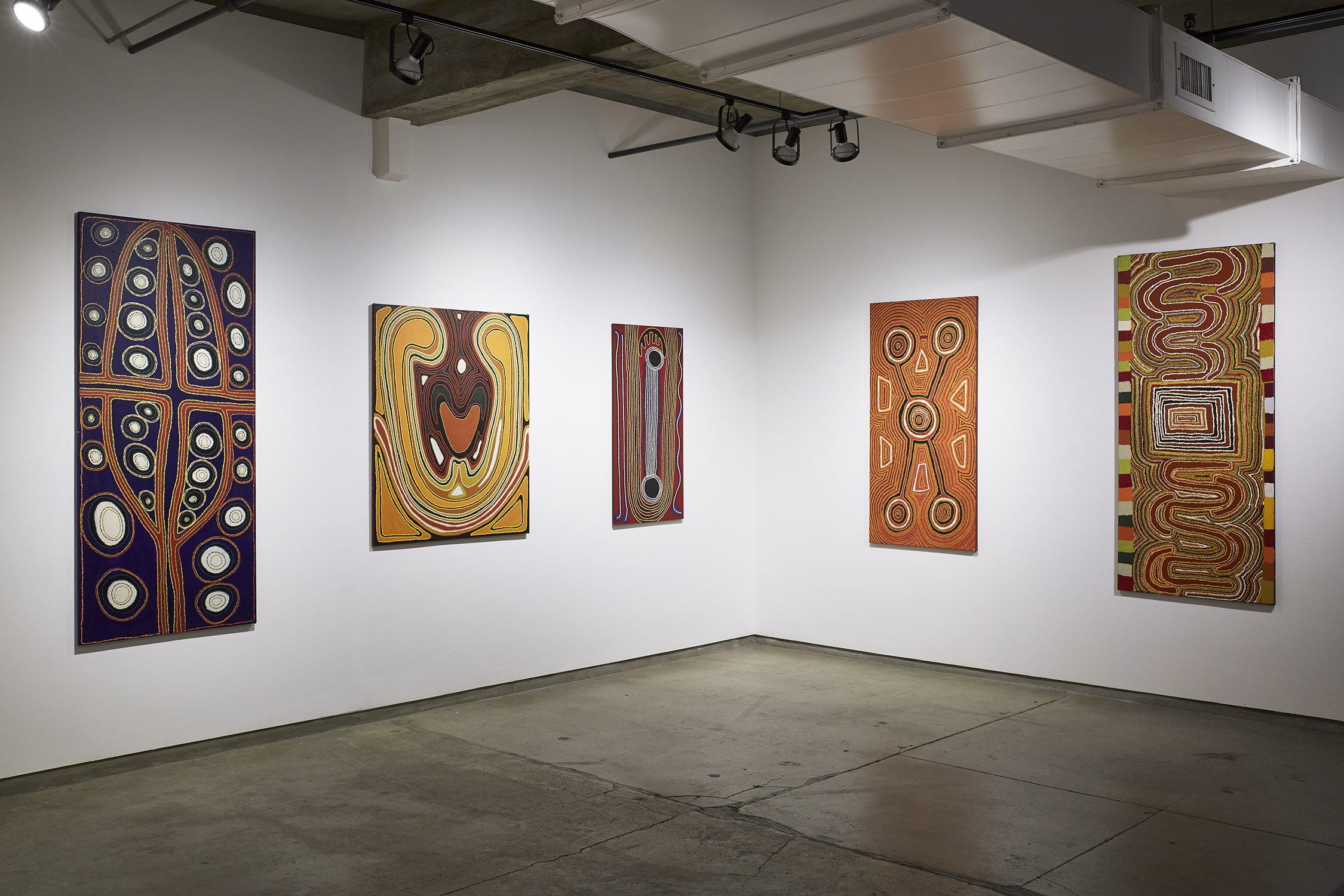EARTH IS TOUCH: PAINTINGS FROM THE BALGO HILLS
(October 28 - December 31, 2021)
Primal art has always had tactility, a sensual relationship to the earth. It may be naturally abstracted, or it may be figurative, but it almost always serves as a physical connection to an integral animism. For the last thirty years we have found this visionary quality in the works of Contemporary Indigenous artists in Australia. It was inevitable, then, that in these days of confrontations with racism and destructive climate change and the greedy cruelty of psychological and physical gentrification, that Cavin-Morris gallery would work toward showing a version of this vastly important art from those original culture bearers of the Western Australian landscape, an art that is alive, current, and electric.
With the help of Emilia Galaitis (Emilia Galitis Projects), who connected us with the Warlayirti Artists and Poppy Lever, Director, Balgo Arts, sixteen paintings by the following Balgo artists were selected: Pauline Sunfly, Helicopter (Joey Tjungurrayi), Jimmie and Angie Tchooga, Winifred Nanala, Vincent Nanala, Brian Mudgedell, Christine Yukenbarri, Matthew West and Miriam Baadjo.
We love this inter-generational group because the artists are not only important Culture Bearers and keepers of the dreaming of their ancestors, but they collectively are more direct and personal in the ways they speak through paint. The colors are intense, visceral, and bold, more gestural than pointillistic, filled with interior light. The application of paint is very physical, and it is directly relates to the traditional application of paint to skin which reflects the charged faceted light of sky, water, and fire. This exhibition is about our excitement in perceiving one people’s interaction with what is still vital and part of an age-old patrimony.
The paintings are also edgy. They are the modern visualizations of an oral culture’s sacred topography. They break the arbitrary rules of what people think contemporary art should include. Although they come from a group comprehensive of traditional cultural laws, but they also reflect the individuality of the creative hand. They are free of dogma. There is no separation between these hands and these souls. These paintings are direct and immediate expressions of ever-changing natural and physical circumstances in a terrain disappearing at the unthinking destruction of mining and commercial developments. Yet the work is beautiful, yet it is dramatic. In a world grasping for preservation of memory, dream, and the sanctity of the Earth herself, it has human importance in its legacies. These hands bring the touching of the Earth to new skins of canvas and paper, awakening in us a hunger for ecological safekeeping.


